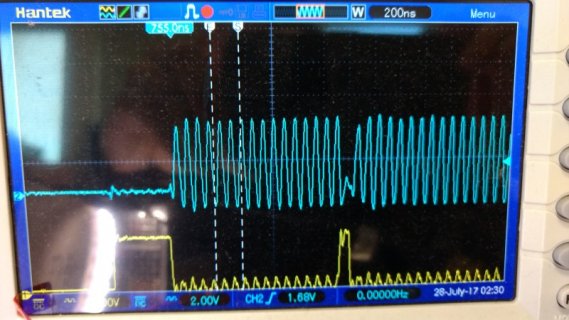Hello,
Few month ago, I used the prop shield to drive an APA102 matrix.
I have not any more a prop shield and I use an other driver.
I do not remenber if I updated my fastled lib but the program controlling the matrix does not work anymore. The hardware setup still works with Adafruit_DotStar.h library.
Back to fastled lib, I probed clock and data signals and I am a bit surprise by the very high frequency (measured period is 84ns), what do you think about this capture?

also, here is my testing code.
View attachment teensy_20170727_pjrcQuestion_apa102.zip
Few month ago, I used the prop shield to drive an APA102 matrix.
I have not any more a prop shield and I use an other driver.
I do not remenber if I updated my fastled lib but the program controlling the matrix does not work anymore. The hardware setup still works with Adafruit_DotStar.h library.
Back to fastled lib, I probed clock and data signals and I am a bit surprise by the very high frequency (measured period is 84ns), what do you think about this capture?

also, here is my testing code.
View attachment teensy_20170727_pjrcQuestion_apa102.zip

